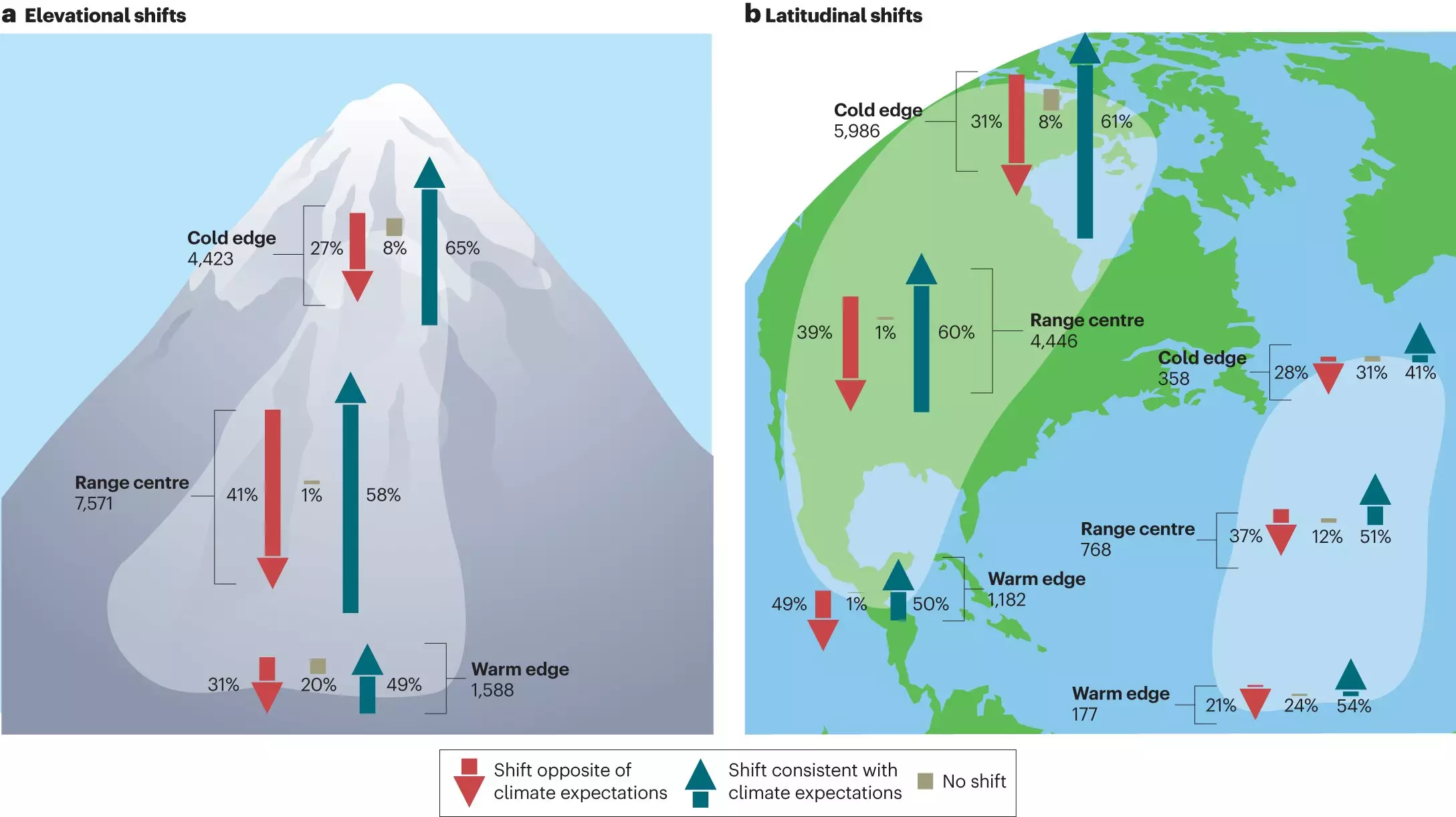The ongoing surge in global temperatures has stirred a profound reorganization of life on Earth, bringing far-reaching consequences not just for ecosystems but also for human societies. Recent research led by McGill University reveals a complex story behind how thousands of species are shifting their habitats amid climate change. At first glance, rising temperatures might seem the definitive force driving species to cooler refuges, yet the reality is intriguingly more nuanced. While over half the species studied migrated in line with warming trends, nearly 41% defied expectations by staying put or moving to environments that don’t align with temperature predictions. This stark divergence exposes a critical limitation in conventional climate models: temperature alone does not govern the vast tapestry of life’s movement.
Complex Ecology: Life Cycles, Sensitivities, and the Landscape Puzzle
This research emphasizes that each species’ response to warming is entangled with an array of biological and environmental factors. For example, the variety of life cycles—whether a species reproduces quickly or invests heavily in fewer offspring—may influence its adaptability and migration capacity. Similarly, differential sensitivity to temperature increases can bind some species to their traditional ranges despite climatic pressure. The characteristics of the surrounding landscape, including physical barriers or availability of corridors, further constrain or facilitate these shifts. Understanding these layers is crucial for fine-tuning predictive models that can forecast not only whether a species will move but also the specific pathways and timelines involved. Without integrating this multifaceted knowledge, efforts to mitigate biodiversity loss may be misdirected or ineffective.
Implications for Human Health, Economy, and Conservation
Species migrations triggered by climate change transcend ecological curiosity; they ripple directly into human well-being. The expansion of mosquitoes and ticks into new territories brings diseases such as malaria and Lyme disease to communities and health systems ill-equipped for these threats. Economically, shifting habitats for commercially important fish alter fishing zones, impacting livelihoods and sparking jurisdictional conflicts. Current resource management frameworks, crafted under the outdated assumption that species ranges remain static, are ill-prepared for these realities. Moving forward, incorporating dynamic species distributions into policy and conservation plans is no longer optional but imperative.
Geographic and Taxonomic Gaps Challenge Our Understanding
Despite advances, data biases hamper a comprehensive understanding of species movement. The vast majority of observed range shifts come from temperate zones in Europe and North America, leaving the tropics and Southern Hemisphere woefully underrepresented. Furthermore, research disproportionately focuses on terrestrial plants and animals, with marine species—integral to global ecosystems—largely overlooked. This skew threatens to distort global averages and may render current predictions irrelevant in less-studied regions or groups. The reliance on data from four-season climates might not translate to regions experiencing monsoonal or other distinct seasonal patterns, underscoring the urgent need for broadened and more balanced monitoring efforts.
A Call for Enhanced Monitoring and Adaptive Strategies
What stands out most is the pressing need to expand and deepen species tracking worldwide. By increasing geographic coverage and taxonomic inclusivity, scientists and policymakers can develop more robust and regionally tailored models. These models would improve our ability to anticipate ecological surprises and support the design of conservation strategies that are resilient to an increasingly unpredictable natural world. This endeavor demands coordinated international collaboration, investment in technology and fieldwork, and a willingness to embrace complexity rather than oversimplify biological responses to climate change.
Instead of treating species movement as a uniform reaction to rising temperatures, this research invites us to recognize and harness the intricate variables at play. Doing so will be vital in reshaping how we coexist with nature in a rapidly changing environment—steering policies and practices towards proactive, informed stewardship rather than reactive crisis management.

